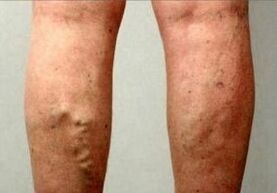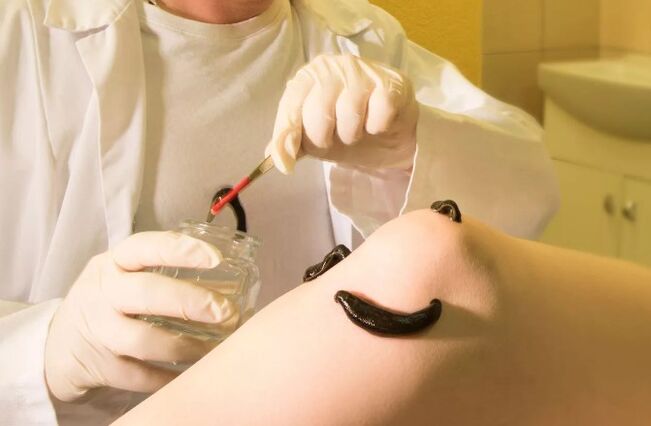Vascular diseases are a very common phenomenon that can happen to everyone. Like many other diseases, varicose veins have their own stages, and if the initial manifestations of pathology are more often associated with discomfort, the latter phase is dangerous not only to health but also to human life. To avoid the onset of such serious consequences as, for example, disability and others, it is necessary to recognize the main features of the manifestation of varicose veins, its development and ways to prevent its complications.

The concept of varicose veins
Varicose veins are a disease that affects the layer of muscle and connective tissue of the vascular wall, as well as their valve appliances. As a result, the veins expand, the blood flow to this location, the opposite blood of the blood through the vessels.
Most people know about varicose veins on their feet. But there are other localizations of the disease, as vessels can be affected in any part of the body.
Most often, in medical practice, varicose veins of the pelvic organs (bladder, uterus), perineum (scrotum, rectum, vagina) are diagnosed. However, in any case, the clinical photography of the disease depends on the site of damage and the pathology phase.
Varicose veins in men and its features
At a young age (on average, at the age of 10-12), a young man may encounter a disease such as varicose veins of the scrotum veins.In science, this condition is called "varicocele". It can be found during a simple examination and palpation of the scrotum. Clinically varicocele manifested by a number of symptoms, which include:
However, varicocele often may not be indicated at all and accidentally identified during a planned examination.
This disease distinguishes three stages:
In adult patients, varicose veins of a scrotum are often diagnosed when treating a doctor with complaints about the inability to have a baby. There is a theory that varicocele affects fertility (the ability to reproduce offspring) by increasing the temperature within the scrotum, which adversely affects the testicle and spermatogenesis. Moreover, this type of varicose veins in men is often combined with damage to the foot vessels.

The diagnosis of the disease is simple. As mentioned earlier, you can suspect the varicose veins of the scrotum on a normal examination, and then an ultrasound study of vascular beam should be performed to confirm. As a method of treatment, only surgical intervention is used: the doctor simply connects varicose veins, blood circulation is performed according to anastomosis. However, it should be borne in mind that with varicose veins, surgery does not guarantee complete healing. Moreover, the disease is in many cases repeated.
Characteristics of varicose veins in women
Varicose veins of the pelvis.For women, this disease is a risk of fetal disturbance. As mentioned above, varicose veins can occur in any part of the body, including in the pelvic area. During pregnancy, the situation has deteriorated, as, first, the abdominal cavity vessels are extended as the fetus grows, and secondly, the growing uterus exerts pressure on them. Because of these processes, the blood flow of the placenta is disturbed, which can lead to its rejection. In this case, of course, the probability of losing a child increases significantly.
Sometimes debut of varicose veins during pregnancy.Before conception, a woman could not doubt that she had a tendency for illness. However, during the period of fetal retention, the female body is subject to certain changes in the body that may provoke certain diseases, including varicose veins. Such changes include:
Moreover, the number of births is directly proportional to the risk of acquired a later pathology. In addition to varicose veins of the pelvis, during pregnancy, other complications can occur:
Thus, pregnancy is a factor that, unfortunately, can provoke varicose veins, as it contributes to a faster development of the pathology and requires preventive measures with a certain diagnosis.
Other consequences of varicose veins
Thrombophlebitis.Often varicose veins and venous deficiency lead to inflammation of the vascular walls - phlebitis, which can be combined with the formation of blood clots - thrombophlebitis. Basically, this disease affects the lower extremities vessels, as a result of which patients complain of severe pain in the affected areas of the legs. Symptoms of a general inflammatory reaction: high fever, weakness. If treatment does not start on time, the process applies to other veins, the patient's condition worsens.

Thromboembolism.In the presence of thrombophlebitis and varicose veins, there is a risk of severe complication - thromboembolism. It occurs due to the separation of blood clots from the vessel wall, followed by the blocking of the most important underwear that nourishes the heart, light and brain.
Initially, a blood clot can be, for example, standing (this is more common). However, from the lower limb, it is forced to move through the bloodstream in different parts of the body. As a result, falling into smaller branches of the vascular system, blood clots cause a collapse, as a result of which the blood flow of the site is disturbed by the appearance of ischemia, and then necrosis. Clinically, this is manifested by a heart attack, a stroke or pulmonary and fat (thromboembolism of the pulmonary arteries), which often ends death.
Treatment of patients who are made from such a diagnosis should only be performed in intensive care and intensive care units. Measures to provide patient help in this case should be taken immediately - only in this case the patient has a chance for rescue.
Dermatitis.Most often, this unpleasant complication occurs on the inner surface of the lower leg, manifested as a number of symptoms, which include:
Dermatitis does not heal well, it can hardly be treated. The presence of a thrombus involves the appearance of trophic ulcers - sections of skin death. In the future, an infection can join ulcers from which purulent wounds may appear.
TelengioecaSia.This cosmetic defect, which looks like a vascular "stars", is a consequence of fractures of small superficial capillaries and a sign of the initial phase of varicose veins.
Hemorrhoids.This is a very common disease - nothing more than varicose veins of the rectum. It is manifested by the appearance of so -called hemorrhoids, which are often able to emerge, break and become inflamed. This causes significant concern for patients.
Diagnostic methods

The easiest and most affordable way to detect varicose veins and its complications is the doppler veins of the lower extremities. In the process of this study, blood flow, blood vessels and the condition of their walls as a whole are evaluated. Thus, the above diagnosis helps to detect blood clots. Moreover, all patients with varicose veins are required to pass the Doppler before any surgical intervention in order to exclude the presence of blood clots in order to avoid complications.
In cases where the patient is suspected of lack of venous or thrombosis, doctors recommend that X -ray contrast phlebography (methods for assessing vein work).
To do this, a special serum - the albumin is inserted into the boat, after which an X -ray is taken, in which impulses coming from the veins will be recorded. Then the result is evaluated.
You can complete the examination with the tomography calculated with the contrast of military drawers. This method is more accurate, but more expensive. However, this method of diagnosis allows not only the identification of vascular diseases, but also to evaluate the condition of the systems and other tissues of the body.
Handling complications
Therapy for the consequences of varicose veins depends on the current condition of the patient and, directly, the type of complication. Thus, thrombophlebitis requires a recipe of aging medicines, anti-inflammatory, antibiotics, sedatives. While the inflammatory process is recommended, physiotherapy, hiruterape (treatment with caterpillars) is recommended. An operation can be proposed as ethotropic treatment - connecting and removing veins.
Trophic ulcers are treated poorly.The surgeon removes necrosis areas, depicts clothing with an antiseptic and oil. Along with these manipulations, antibacterial therapy and blood flow to Vienna are performed.
Vascular stars are eliminated from sclerotherapy, that is, the so -called "climbing" of the vein lumen. After the procedure, the linen is described to prevent relapse.
Other complications, such as hemorrhoids, varicocele and varicose veins of the pelvis can only be cured surgical after a thorough examination and identify the affected vein.
Predict

An unfavorable prognosis is observed in the case of pulmonary artery thromboembolism, the number of deaths in which it reaches 75%. Also, thrombophlebitis with trophic lesions of the skin has a non -initial characteristic, as with such a disease constant changes occur in the blood vessels, and the risk of infection has also increased, which leads to a number of complications. The consequences of the disease can often lead the patient to disability.
Indications for providing a patient for disability are:
Most often, disability is given to patients with the latest phase of varicose veins with a continuous impaired performance.























